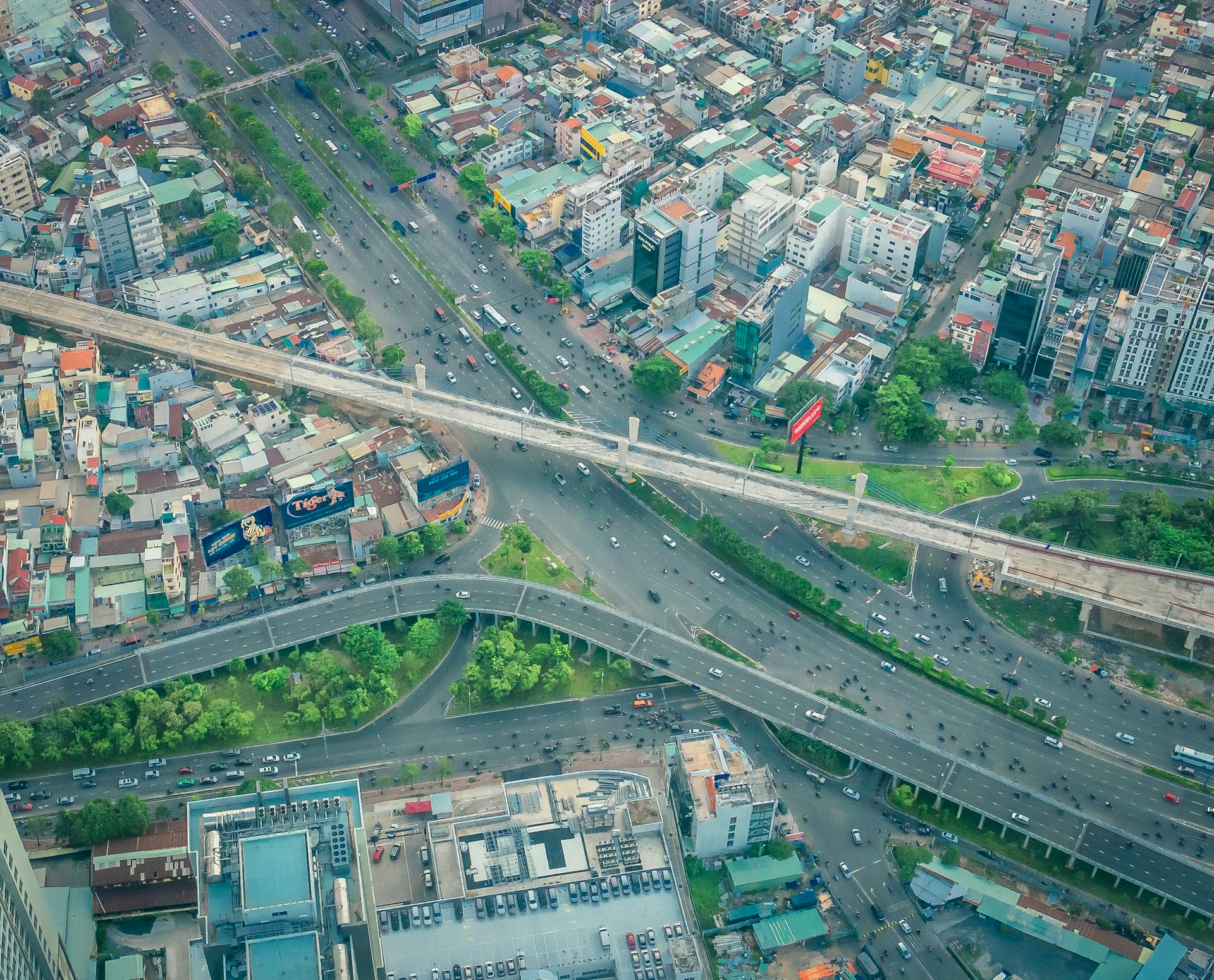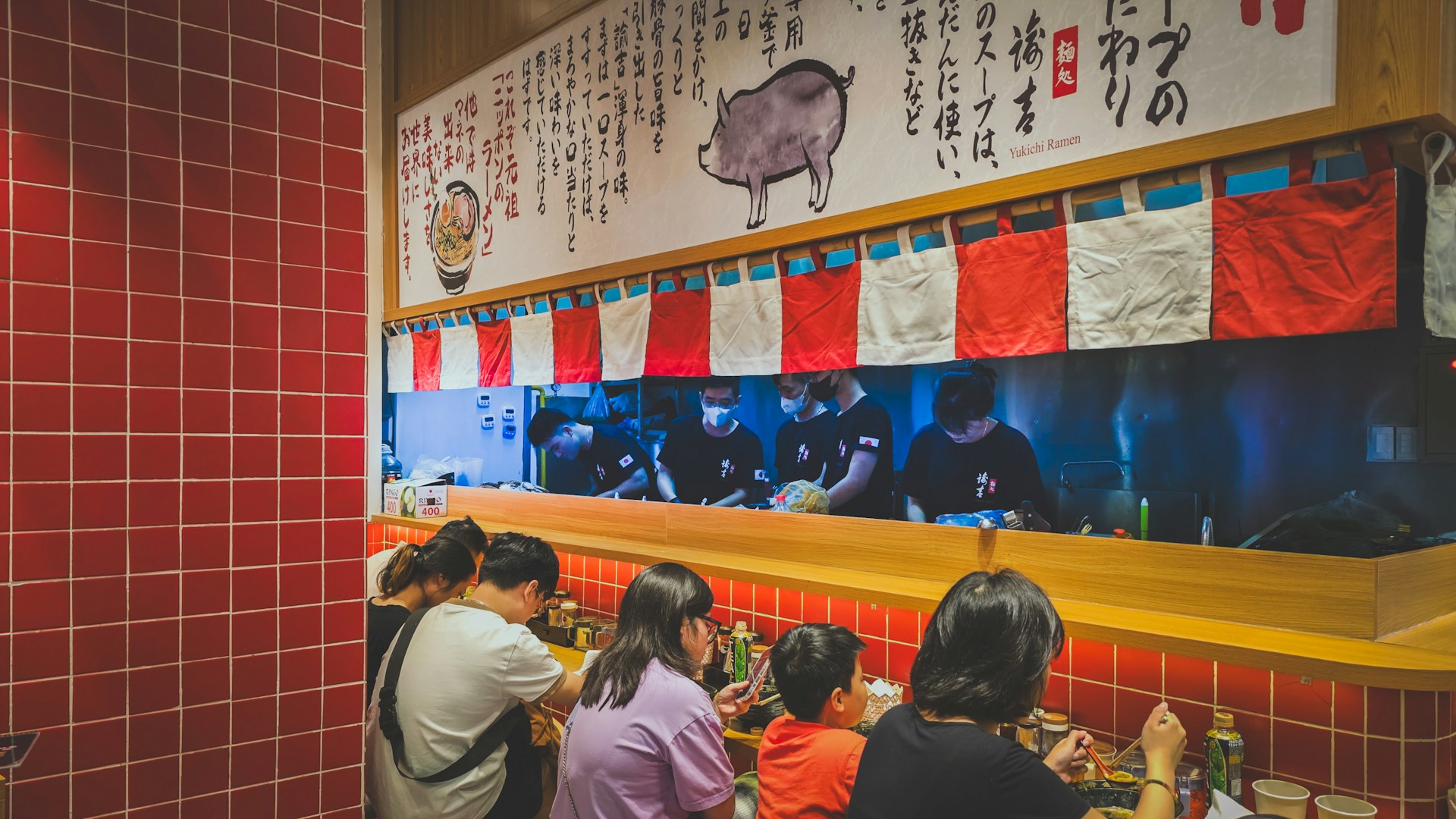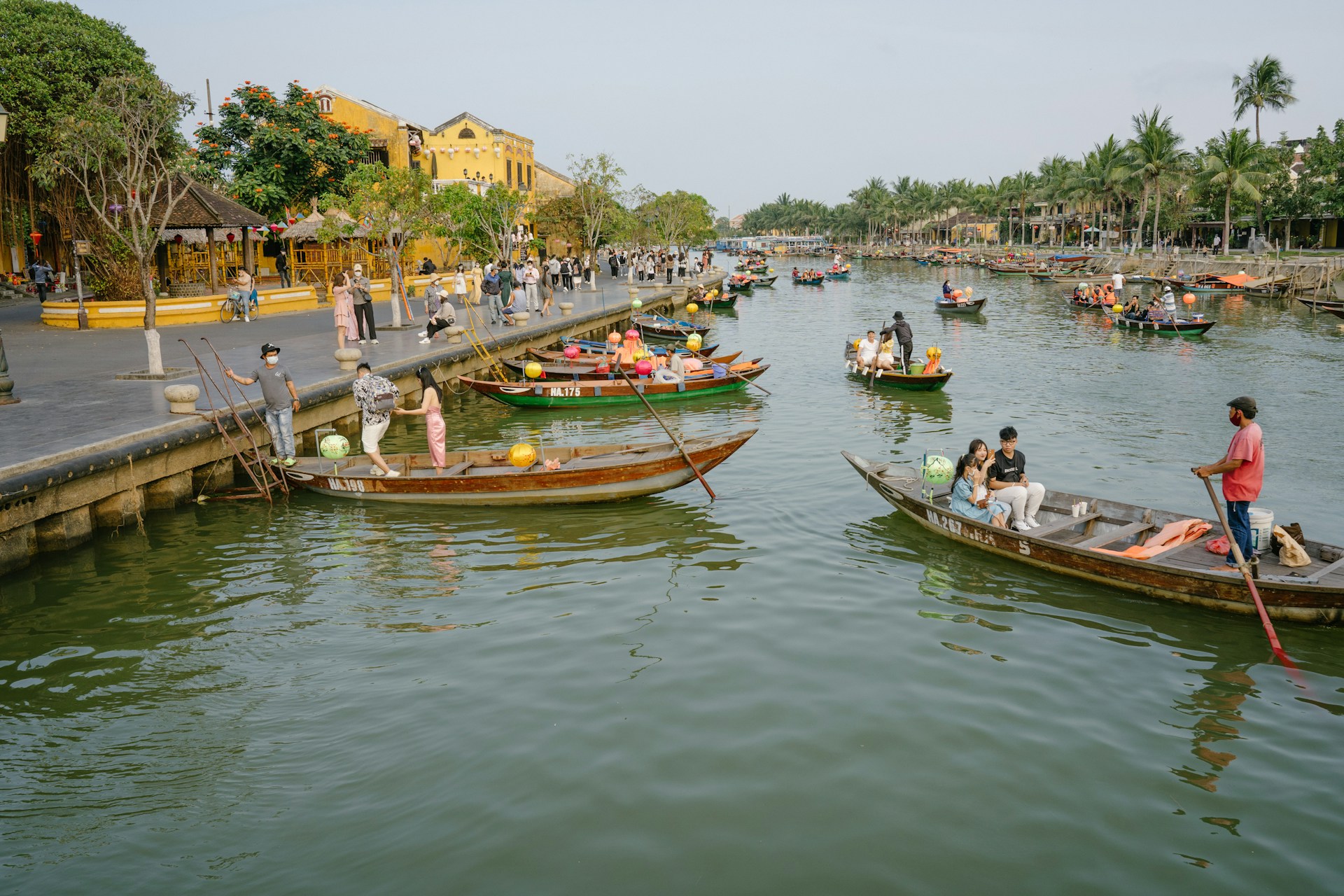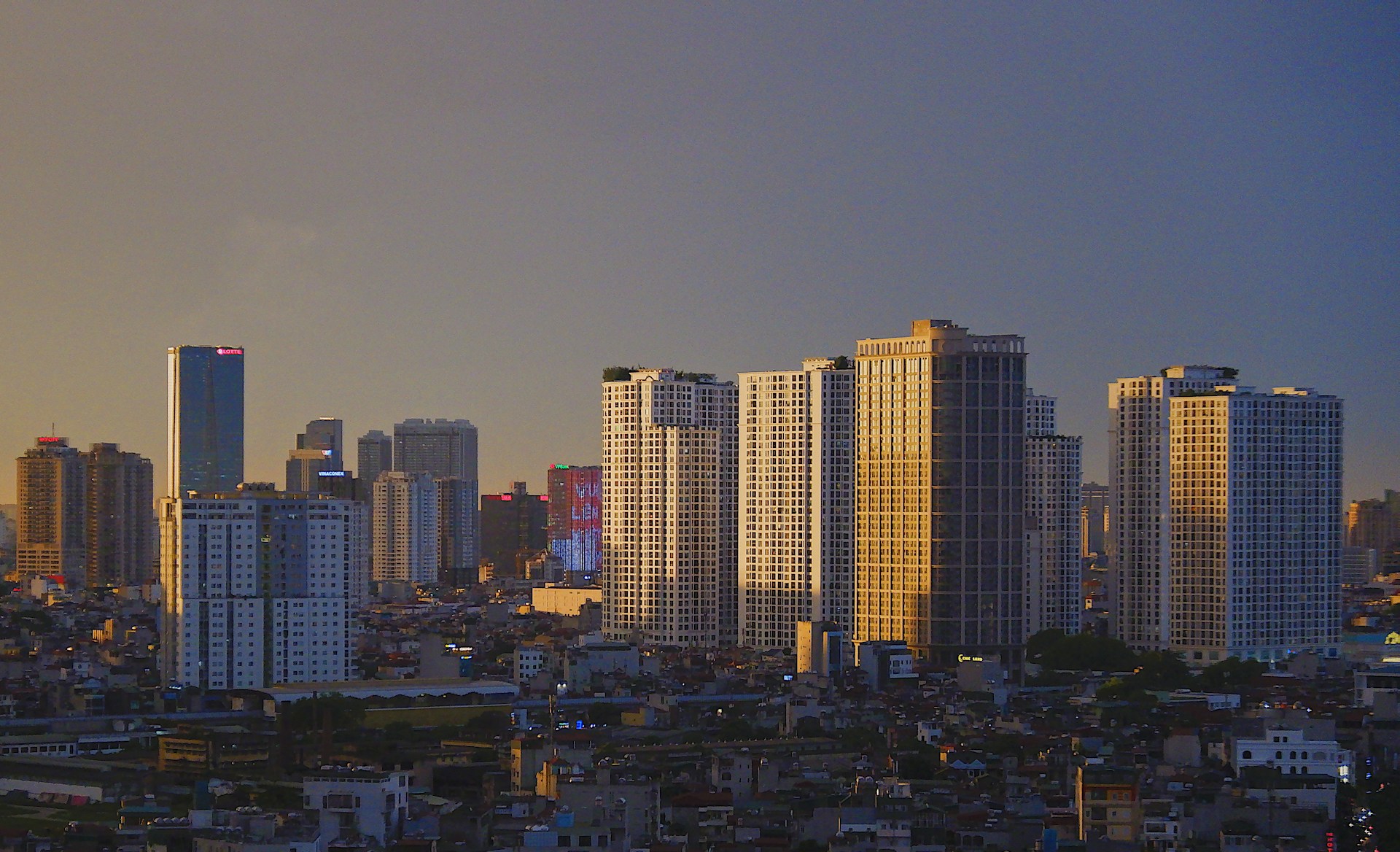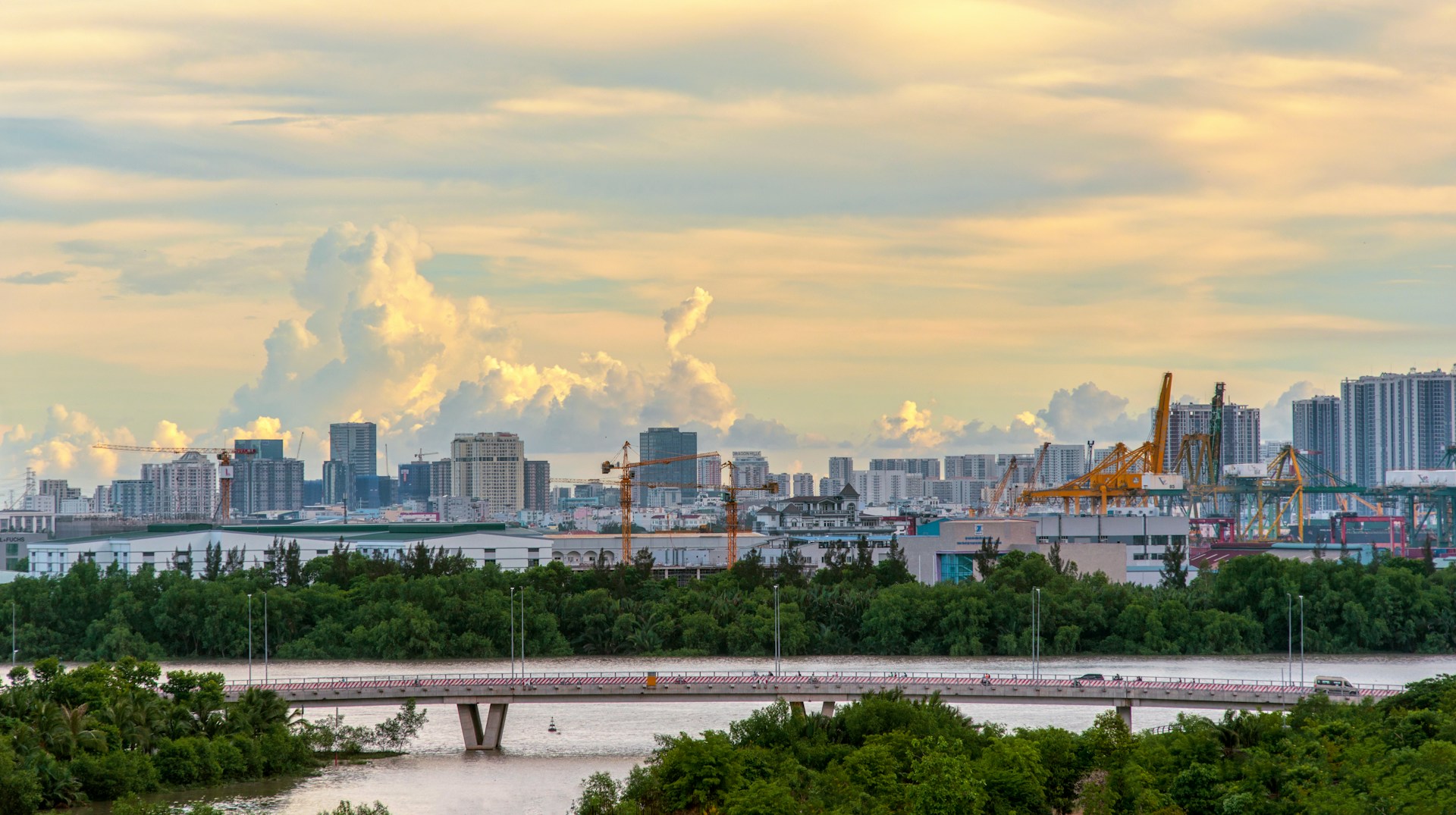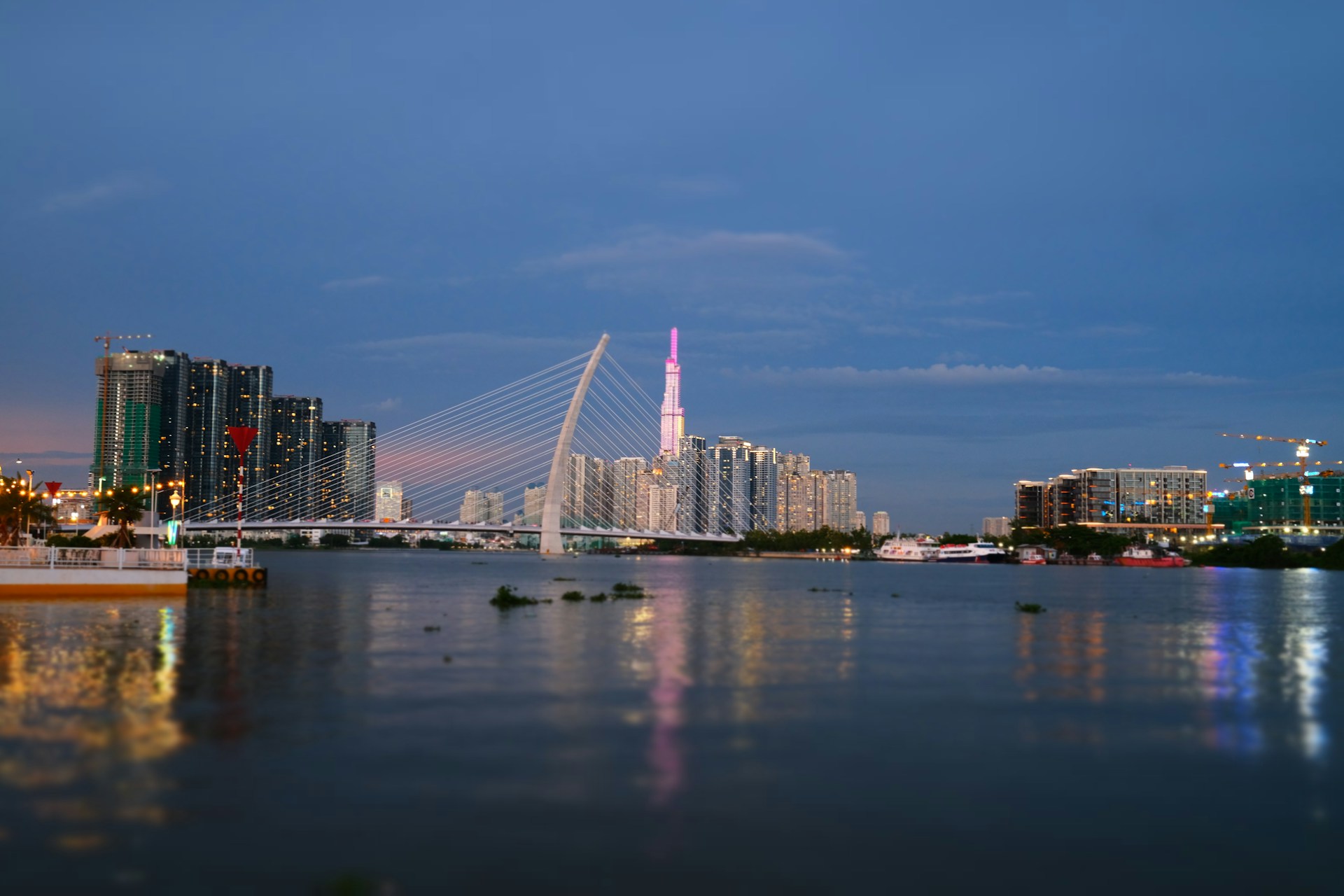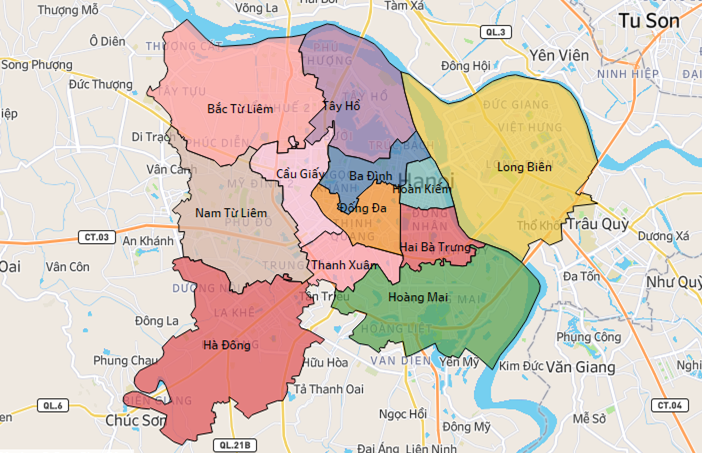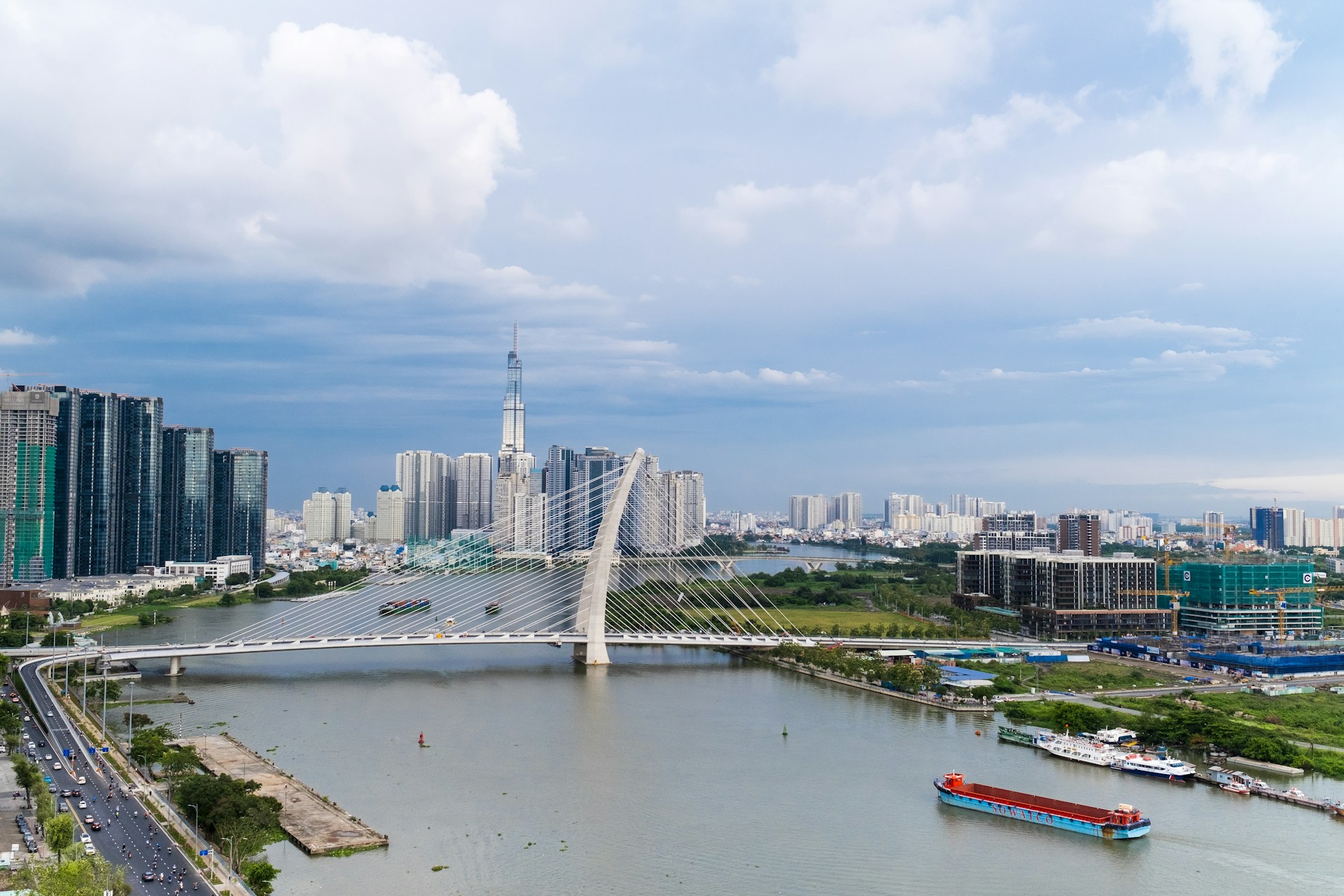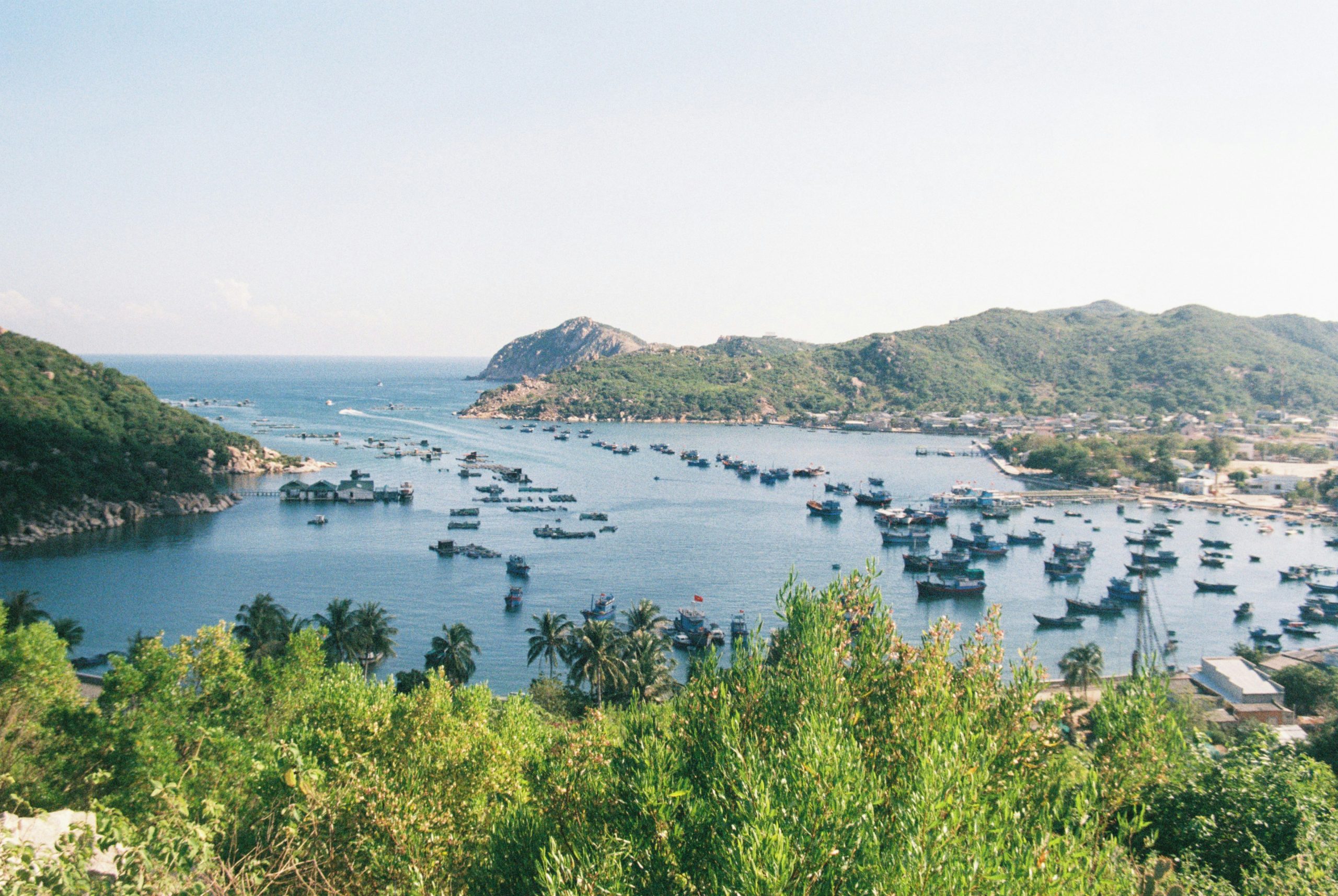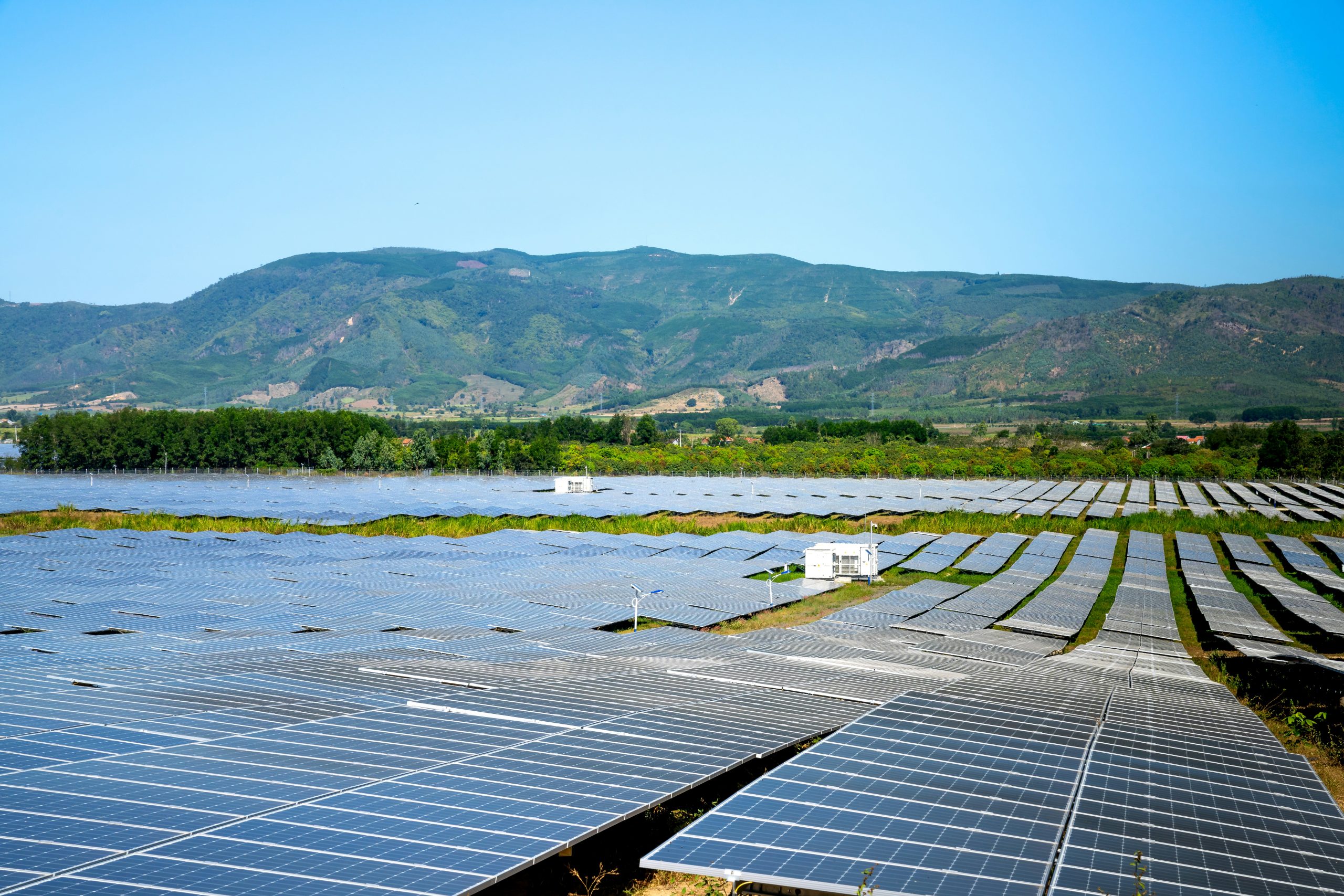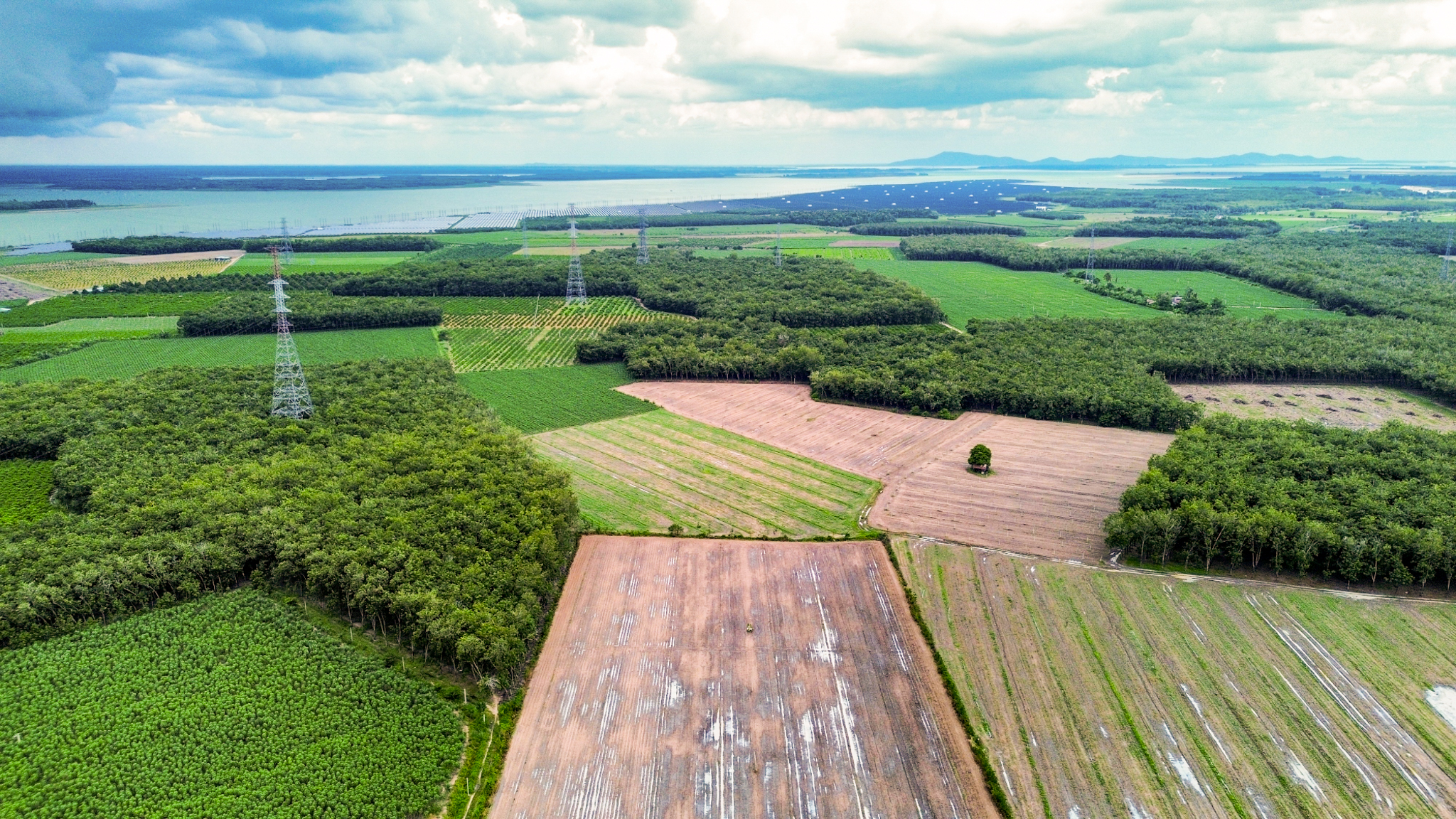
20Oct2025
Latest News & Report / Vietnam Briefing
Comments: No Comments.
Following the administrative merger of Long An and Tay Ninh provinces under Resolution No. 202/2025/QH15, the new Tay Ninh province has emerged as one of southern Vietnam’s largest economic territories, strategically positioned between the Southeast region and the Mekong Delta. With expanded infrastructure, diverse industrial and agricultural bases, and growing cross-border connectivity, Tay Ninh is poised to become a key logistics, manufacturing, and renewable-energy hub along the Moc Bai – Ho Chi Minh City – Bien Hoa – Vung Tau economic corridor. These developments present strong potential for foreign investment across industrial, logistics, agri-tech, and green-growth sectors.
Tay Ninh Province After the Merger: Scale and Position
According to the National Assembly’s Resolution No. 202/2025/QH15 on the reorganization of provincial-level administrative units, the entire natural area and population of Long An and Tay Ninh provinces were merged into a new administrative unit named Tay Ninh Province. Following the reorganization, the new Tay Ninh Province covers a total natural area of 8,536 km² with a population of 3,254,170, comprising 96 commune-level administrative units (including 82 communes and 14 wards) as stipulated in Resolution No. 1682/NQ-UBTVQH15.
The new Tay Ninh Province now possesses a significantly expanded economic scale and development space. With a natural area of 8,536 km² and a population exceeding 3.2 million, the province enjoys substantial advantages in infrastructure scale and human resource availability to drive socio-economic growth. In terms of Gross Regional Domestic Product (GRDP), the merger has elevated Tay Ninh into the top 10 provinces nationwide.
Key information of Tay Ninh Province after merger (After 1st July, 2025)
| Tay Ninh province in Vietnam map | Key figures (2024) | |
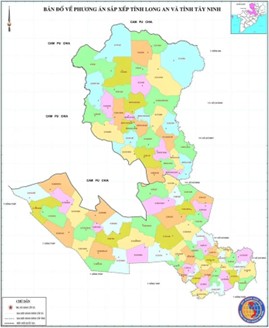 |
Area (km2) | 8,536 |
| Population
(thousand persons) |
3,254 | |
| Labor Force
(thousand persons) |
1,708 | |
| Gross Regional Domestic Product (GRDP) (billion VND) | 313,000 | |
| GRDP Structure
|
– Industry – Construction: 49.4%
– Services: 27.6% – Agriculture – Forestry – Fishery: 17.4% – Product Tax minus Subsidies: 5.6% |
|
Source: B&Company synthesis
Under the Government’s Resolution No. 306/NQ-CP dated October 5, 2025, on the “Adjustment of the National Master Plan for the 2021–2030 period, with a vision to 2050,” the new Tay Ninh Province is classified as part of the Southeast Region. From a regional planning perspective, this marks a strategic adjustment in the spatial organization of Southern Vietnam’s development, as Long An (formerly part of the Mekong Delta) and Tay Ninh (previously in the Southeast Region) are now integrated into a single regional planning framework. This combination generates synergistic advantages in development space, transportation infrastructure, industrial land, as well as regional coordination and investment attraction capacity.
The Resolution also identifies priority economic corridors through 2030, including the “Moc Bai – Ho Chi Minh City – Bien Hoa – Vung Tau Economic Corridor, linked with the Trans-Asian Economic Corridor, serving as a gateway to the sea for the Southeast Region and promoting regional economic growth.” Accordingly, Tay Ninh Province is positioned as a key border gateway and international logistics hub of the Southeast Region, playing a pivotal role in the Trans-Asian Economic Corridor and regional integration strategy. At the same time, Tay Ninh continues to function as a strategic transitional zone, connecting the Mekong Delta with Ho Chi Minh City and the broader Southeast Region.
Key Leadership Structure and Political Stability
The success of the administrative merger and restructuring process largely depends on the stability and governance capacity of the local leadership apparatus.
Following the merger, the new Tay Ninh Provincial Party Committee was established through the consolidation of the former Party Committees of Tay Ninh and Long An. Mr. Nguyen Van Quyet was elected as Secretary of the Provincial Party Committee, along with four Deputy Secretaries: Mr. Nguyen Manh Hung (Standing Member), Mr. Nguyen Van Ut, Mr. Pham Hung Thai, and Mr. Nguyen Thanh Hai.
In terms of the provincial government, Mr. Nguyen Van Ut, formerly Chairman of the Long An Provincial People’s Committee, was appointed as Chairman of the new Tay Ninh Provincial People’s Committee. He is supported by five Vice Chairmen: Mr. Nguyen Hong Thanh, Mr. Nguyen Minh Lam, Mr. Doan Trung Kien, Mr. Pham Tan Hoa, and Mr. Huynh Van Son. The Chairman of the Provincial People’s Committee plays a central role in state administration, overseeing master planning, socio-economic development, national defense and security, as well as approving key investment programs and projects within the province.
The stability of the senior leadership team is considered a key factor in ensuring continuity and consistency in policy implementation during the post-merger development phase.
List of New Key Leaders of Tay Ninh Province (After 1st July 2025)
| No. | Full Name | Position |
| 1 | Nguyen Van Quyet | Provincial Party Committee Secretary |
| 2 | Nguyen Van Ut | Deputy Secretary of the Provincial Party Committee cum Chairman of the Provincial People’s Committee |
| 3 | Nguyen Manh Hung | Deputy Secretary of the Provincial Party Committee cum Chairman of the People’s Council |
| 4 | Pham Hung Thai | Deputy Secretary of the Provincial Party Committee cum Head of the National Assembly Delegation |
| 5 | Nguyen Thanh Hai | Deputy Secretary of the Provincial Party Committee cum President of the Central Committee of the Vietnam Fatherland Front |
| 6 | Nguyen Thanh Vung | Chairperson of the Inspection Commission of the Provincial Party Committee |
| 7 | Nguyen Hong Thanh | Vice Chairman of the Provincial People’s Committee |
| 8 | Nguyen Minh Lam | Vice Chairman of the Provincial People’s Committee |
| 9 | Doan Trung Kien | Vice Chairman of the Provincial People’s Committee |
| 10 | Pham Tan Hoa | Vice Chairman of the Provincial People’s Committee |
| 11 | Huynh Van Son | Vice Chairman of the Provincial People’s Committee |
Source: Congly.vn [1]
Strategic Growth Drivers
– Regional Connectivity and Transport Infrastructure
After the merger, the new Tay Ninh province possesses a more integrated interregional transport infrastructure network stretching from the Cambodian border to the Mekong Delta. Key expressways such as Ho Chi Minh City–Moc Bai (via Tay Ninh) and Ho Chi Minh City–Trung Luong–My Thuan (via Long An), together with National Highways 1 and 22, form a strategic transport framework linking the Southeast region with the Mekong Delta.
The new Tay Ninh enjoys a combined advantage of both road and waterway transport, facilitating the movement of goods and raw materials between production and consumption areas. Several large-scale infrastructure projects are being implemented, including four new arterial roads directly connecting Ho Chi Minh City with Tay Ninh (each 40–60 meters wide, with a total investment exceeding VND 53,100 billion)[2], alongside the Ho Chi Minh City–Moc Bai Expressway — forming a vital economic, trade, and logistics corridor.
In terms of border-gate and international connectivity, before the merger, Long An had an international seaport and river network linked to the East Sea, while Tay Ninh had international land border gates. After the merger, the new Tay Ninh now has an extended border and four international border gates — Moc Bai, Xa Mat, Tan Nam (formerly of Tay Ninh), and Binh Hiep (formerly of Long An). This combination expands cross-border goods transit capacity via both land and water, laying the groundwork for developing border-gate economies, logistics hubs, and free trade zones serving import–export activities.
– Optimizing Industrial and Energy Development Potential
Before the merger, Long An was one of the most dynamic industrial provinces in southern Vietnam, with active industrial parks and clusters focused on electronics, mechanics, food processing, and construction materials. Tay Ninh, on the other hand, had a large reserve of industrial land but a lower occupancy rate, along with advantages in energy resources such as the Dau Tieng hydropower system and strong potential for renewable energy and border trade. After the merger, the new Tay Ninh gains dual growth momentum — balancing strategic location and developed infrastructure with abundant land, energy potential, and cross-border trade opportunities.
In energy planning, before the merger, Tay Ninh had been known for its strong renewable energy development, especially solar power due to high radiation levels, with major projects concentrated around Dau Tieng Lake. Long An also attracted large investors in renewable energy — not only solar but also waste-to-energy and biomass projects[3]. Now, major projects such as the Long An Solar Park and TTC Duc Hue 2 have been integrated into the new Tay Ninh’s energy portfolio, increasing total capacity and diversifying the province’s renewable energy mix.
– Developing Comprehensive Agricultural Value Chains and High-Tech Agriculture
The new Tay Ninh has a large natural land area, forming a broad and diverse interregional agricultural space stretching from the gateway of the Mekong Delta to the Cambodian border.
Before the merger, Long An was located at the headwaters of the Mekong River, with the Vam Co Dong and Vam Co Tay river systems creating fertile plains spanning over 538,900 hectares of rice — yielding over 3 million tons per year [4]— placing it among Vietnam’s largest rice producers. In addition to rice, Long An was also known for sugarcane, dragon fruit, seedless lime, and vegetable production for both Ho Chi Minh City and export markets. Tay Ninh, meanwhile, specialized in sugarcane, cassava, and rubber, and had been developing high-tech agricultural zones linked to processing industries.
The merger enables the new Tay Ninh to leverage a more diverse agricultural land base and ecosystem, facilitating a shift from raw material production toward integrated agricultural value chains based on high-tech farming, agro-processing, and logistics. This also creates opportunities to form regional agricultural value chains linking the Southeast, Ho Chi Minh City, and the Mekong Delta — capitalizing on raw material advantages, processing capacity, and export potential.
Investment Opportunities
Before the merger, in 2024, Tay Ninh province attracted nearly USD 455 million in foreign direct investment (FDI), primarily in food and beverage processing, textiles, mechanical engineering, electronic components, and supporting industries. Meanwhile, Long An recorded approximately USD 507 million, mainly in food and beverage processing, textiles, retail, real estate, and logistics infrastructure [5].
Following the merger, the new Tay Ninh province has continued to attract a growing number of large-scale foreign investment projects. In the first nine months of 2025 alone, the province licensed 157 new FDI projects with a total registered capital of USD 815.24 million, focusing on sectors such as food processing, textiles, machinery, electronic components, and supporting industries.
Some FDI projects invested in Tay Ninh province after July 1, 2025
| Time | Project name / Investor | Capital scale | Location | Industry/Field | Note |
| July/2025 | Coca-Cola Factory Tay Ninh (Swire Coca-Cola Beverages Vietnam)[6] | ~136 million USD | Phu An Thanh Industrial Park | Beverage production, high technology, LEED Gold standard | The largest Coca-Cola factory in Vietnam |
| July/2025 | Xuyen A Industrial Park – Phase 3 (domestic infrastructure investor, welcoming secondary FDI)[7] | ~3.560 billion VND (~145 million USD) | Duc Hoa District (bordering Tay Ninh) | Industrial park infrastructure development | Create a new land fund to attract secondary FDI |
| August/2025 | 400 ha High-tech Industrial Park (Hung Thuan)[8] | Not yet specifically announced | Tay Ninh | High-tech industry (chips, electric cars, aviation) | Approved before 7/2025, but FDI promotion takes place in the second half of 2025 |
Source: B&Company’s synthesis
With strong growth drivers including an expanded economic space, inter-regional industrial and logistics infrastructure, abundant human resources, and a diversified base in agriculture, energy, and manufacturing, the new Tay Ninh presents a broad range of investment opportunities for foreign investors. Key potential areas include:
– Industrial and Inter-regional Logistics Infrastructure: Tay Ninh is well-positioned to become a large-scale logistics and manufacturing hub linking Ho Chi Minh City, the Moc Bai border gate, and southern seaports. Investment opportunities include industrial parks and ready-built factories, multimodal logistics centers, cold chain systems for agri-food exports, and cross-border logistics services supporting international trade.
– Manufacturing and Supporting Industries: With advantages in labor availability, industrial infrastructure, and regional connectivity, Tay Ninh has strong potential to develop supporting industries, precision engineering, electronic components, high-value textiles and footwear, as well as food and agricultural processing industries.
– High-tech Agriculture and Agricultural Value Chains: Located at the gateway between the Southeast and Mekong Delta regions, Tay Ninh is ideally placed to develop inter-regional agricultural value chains. Investment opportunities include high-tech agriculture aligned with provincial policy, digitalization and automation in production, deep processing of key crops, and agricultural logistics and preservation infrastructure serving export markets.
– Renewable Energy and Green Infrastructure: The province’s abundant land resources and renewable energy potential open opportunities in solar and biomass power projects, as well as in eco-industrial zones integrating renewable energy and low-carbon production models, aligned with sustainable FDI and green supply chain trends.
– Urban and Supporting Infrastructure Development: Positioned along the Moc Bai – Ho Chi Minh City – Bien Hoa – Vung Tau economic corridor, Tay Ninh offers investment opportunities in regional transportation networks, industrial and urban real estate, specialized logistics zones, and cross-border commercial centers
Conclusion
The merger of Tay Ninh and Long An has transformed Tay Ninh into a key growth hub in Vietnam’s Southern Economic Region. With its strategic location, strong leadership, and robust infrastructure, the province is poised to become a vital logistics and industrial center linking Vietnam with Cambodia and the Mekong region. The combination of abundant labor, steady economic growth, and favorable investment policies offers a solid foundation for attracting both domestic and foreign investors, especially in sectors like industrial infrastructure, manufacturing, and high-tech agriculture. Tay Ninh is now not only a border gateway but a regional development driver, offering both immediate and long-term investment opportunities
*Cover photo: CafeF
[1] Congly.vn, The new key leadership team of Tay Ninh province (https://congly.vn/doi-ngu-lanh-dao-chu-chot-tinh-tay-ninh-moi-484463.html)
[2] Laodong.vn, Ho Chi Minh City opens 4 new roads 40 – 60 m wide connecting Tay Ninh province, total capital 53,100 billion VND (https://laodong.vn/xa-hoi/tphcm-mo-4-tuyen-duong-moi-rong-40-60-m-noi-tinh-tay-ninh-tong-von-53100-ti-dong-1577857.ldo)
[3] Tuoitre.vn, Long An will have 2 biomass power plants, 3 waste power plants (https://tuoitre.vn/long-an-se-co-2-nha-may-dien-sinh-khoi-3-nha-may-dien-rac-20240812120931868.htm)
[4] Baolongan.vn, A successful year for the agricultural sector (https://baolongan.vn/mot-nam-thang-loi-cua-nganh-nong-nghiep-a188027.html)
[5] La34.com.vn, Tay Ninh economy – Driving force after the merger (https://la34.com.vn/kinh-te-tay-ninh-dong-luc-sau-sap-nhap-133710.html)
[6] Theinvestor.vn, Coca-Cola inaugurates largest-scale Vietnam factory in Tay Ninh province (https://theinvestor.vn/coca-cola-inaugurates-largest-scale-vietnam-factory-in-tay-ninh-province-d16299.html)
[7] Tayninh.gov.vn, Approval of investment policy for Xuyen A Industrial Park Project Phase 3 (https://www.tayninh.gov.vn/thoi-su-chinh-tri/chap-thuan-chu-truong-dau-tu-du-an-khu-cong-nghiep-xuyen-a-giai-doan-3-1014297)
[8] Vietnam+, Tay Ninh gives green light to 400ha high-tech industrial park (https://en.vietnamplus.vn/tay-ninh-gives-green-light-to-400ha-high-tech-industrial-park-post323927.vnp)
